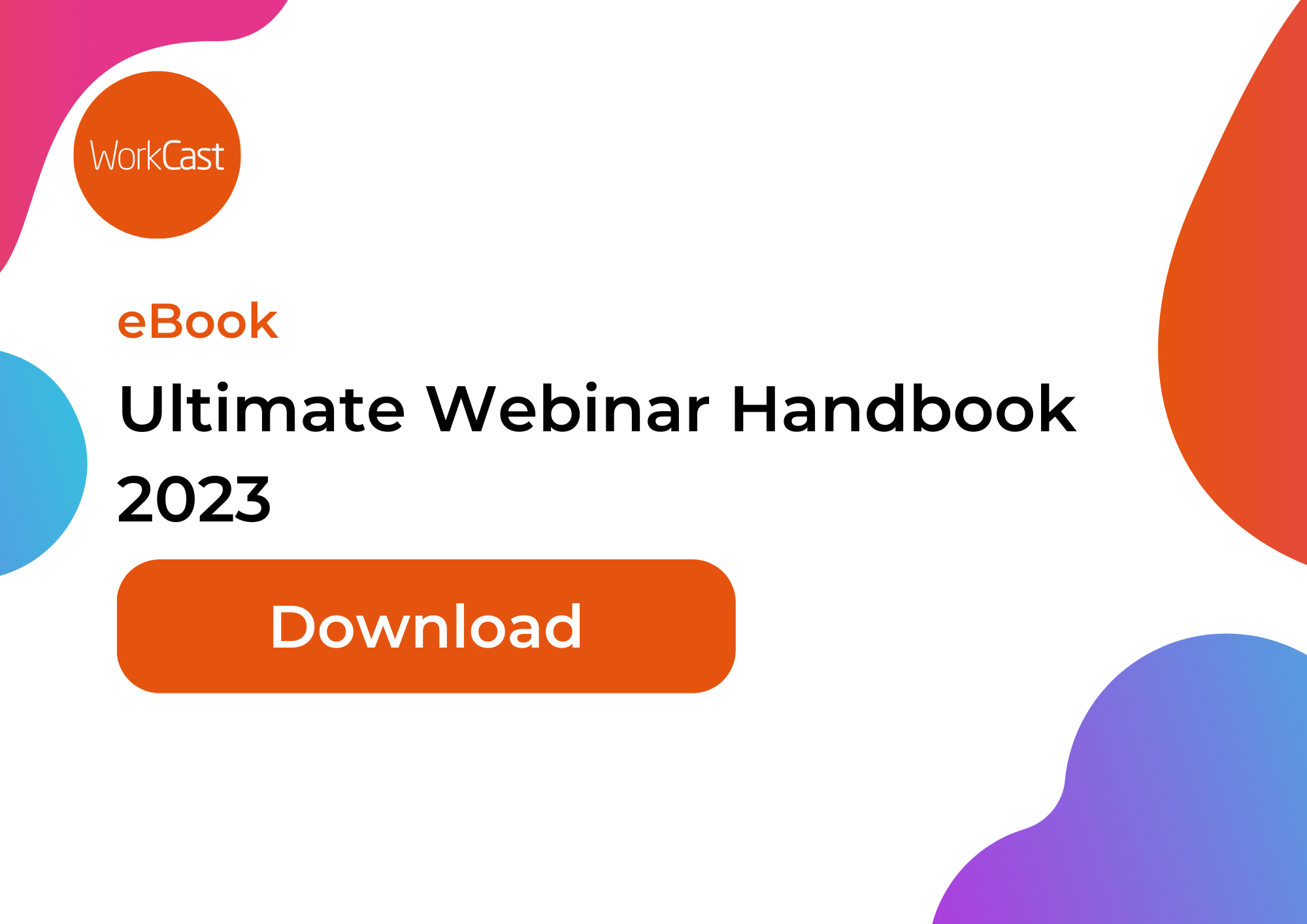Understanding demand generation and lead generation
In today's competitive business landscape, understanding the concepts of demand generation and lead generation is crucial for driving growth and achieving success. Demand generation refers to the strategies and tactics used to create awareness and interest in your products or services among your target audience. On the other hand, lead generation focuses on capturing and nurturing potential customers who have shown interest in your offerings.
Webinars have emerged as a powerful tool in both demand generation and lead generation. By hosting engaging online presentations or webcasts, businesses can effectively reach out to their target audience, showcase their expertise, and generate valuable leads. Let's explore the role of webinars in demand generation and how they can contribute to your overall marketing efforts.
The role of webinars in demand generation
Webinars offer a unique opportunity to connect with your target audience on a deeper level. Unlike other forms of content marketing, webinars allow you to engage with your audience in real-time, creating a sense of personal interaction and building trust. By hosting webinars, you can position your brand as a thought leader in your industry and establish credibility among your target audience.
Moreover, webinars provide a platform for showcasing your products or services in a dynamic and interactive manner. You can demonstrate the value and benefits of your offerings, address common pain points, and provide practical solutions. This not only helps in generating demand for your products or services but also allows you to educate your audience and empower them to make informed purchasing decisions. Hosting your content on-demand afterwards also keeps the story going and makes your content evergreen.
Benefits of using webinars for demand generation
There are several key benefits of using webinars as part of your demand generation strategy. Firstly, webinars enable you to reach a wider audience, regardless of their geographical location. With the power of technology, you can connect with people from all around the world, expanding your reach and increasing your brand visibility.
Secondly, webinars allow you to generate high-quality leads. When participants register for your webinar, they provide their contact information, indicating their interest in your topic and offerings. This enables you to capture valuable leads that are more likely to convert into customers.
Additionally, webinars provide an opportunity for real-time engagement and feedback. Participants can ask questions, share their opinions, and interact with both the presenter and other attendees. This not only enhances the overall webinar experience but also helps in building a sense of community around your brand.
Key components of a successful webinar for lead generation
To harness the full potential of webinars for demand generation, it's important to consider the key components of a successful webinar for lead generation. Firstly, you need to choose a compelling topic that addresses the pain points and challenges faced by your target audience. Conducting thorough research and understanding your audience's needs will help you identify the most relevant and engaging topics.
Secondly, your webinar content should be informative, engaging, and well-structured. Plan your presentation in a way that flows smoothly and keeps your audience hooked from start to finish. Incorporate visuals, storytelling techniques, and interactive elements to make your webinar more engaging and memorable.
Additionally, it's crucial to promote your webinar effectively to attract a larger audience. Utilize various marketing channels such as email marketing, social media, and your website to create awareness and generate registrations. Craft compelling promotional materials that highlight the value and benefits of attending your webinar and you'll reap the rewards of high-quality leads.
Tips for creating high-quality webinar content
Creating high-quality webinar content is the key to unlocking the power of webinars for demand generation. Here are some tips to help you create compelling and impactful webinar content:
- Know your audience: Understand the demographics, preferences, and pain points of your target audience. Tailor your content to address their specific needs and interests.
- Tell a story: Use storytelling techniques to make your webinar content more relatable and engaging. Share real-life examples, case studies, and success stories to illustrate your points.
- Include interactive elements: Incorporate polls, quizzes, and Q&A sessions to encourage active participation from your audience. This not only keeps them engaged but also provides valuable insights and feedback.
- Keep it concise: Respect your audience's time by delivering focused and concise content. Avoid unnecessary tangents and ensure that your webinar stays on track.
- Provide actionable takeaways: End your webinar with clear and actionable takeaways that your audience can implement immediately. This adds value to their experience and increases the chances of them becoming your customers.
Gating versus ungating webinar content
One important decision you need to make when leveraging webinars for demand generation is whether to gate or ungated your webinar content. Gating refers to requiring participants to provide their contact information before they can access the webinar, while ungating allows anyone to attend the webinar without any registration.
Gating your webinar content can help you capture valuable leads and build your email list. By requiring registration, you can collect contact information such as names, email addresses, and company details, which can be used for future marketing efforts. However, gating your content may also deter some potential participants who are hesitant to provide their information.
On the other hand, ungating your webinar content allows for maximum reach and accessibility. It removes any barriers to entry, making it easier for people to attend your webinar. This can be particularly beneficial if your goal is to create brand awareness and reach a wider audience. However, without gating, you may not be able to capture leads directly from the webinar itself.
Ultimately, the decision to gate or ungated your webinar content depends on your specific goals and objectives. Consider factors such as lead quality, target audience, and overall demand generation strategy to determine which approach is best for your business.
Measuring the success of your webinar demand generation efforts
To gauge the success of your webinar demand generation efforts, it's important to measure key metrics and analyze the results. Some of the metrics you can track include:
- Registration rate: Measure the number of registrations compared to the total number of people who visited your webinar registration page. This indicates the effectiveness of your promotional efforts.
- Attendance rate: Track the percentage of registered participants who actually attended the webinar. A high attendance rate suggests strong interest and engagement.
- Engagement rate: Monitor participant engagement during the webinar, such as questions asked, polls answered, and chat interactions. This helps assess the level of interest and active participation.
- Conversion rate: Calculate the number of leads generated from the webinar compared to the total number of attendees. This indicates the quality of the leads captured.
- Sales revenue: Measure the amount of opportunities entering your sales pipeline and revenue generated from your webinar leads. This provides a direct measure of the impact on your bottom line.
By analyzing these metrics and comparing them against your goals and benchmarks, you can gain valuable insights into the effectiveness of your webinar demand generation efforts. Use this data to identify areas for improvement and optimize future webinars.
Demand generation versus lead generation: Which is right for your business?
While demand generation and lead generation are closely related, it's important to understand the nuances and determine which approach is right for your business. Demand generation focuses on creating awareness and interest in your products or services, targeting a broader audience. It aims to generate demand and build brand visibility.
Lead generation, on the other hand, is more focused on capturing and nurturing potential customers who have demonstrated interest in your offerings. It aims to generate high-quality leads that are likely to convert into customers.
The choice between demand generation and lead generation depends on your business goals, target audience, and overall marketing strategy. If you're in a highly competitive industry and need to create brand awareness, demand generation may be the right approach. On the other hand, if you have a more niche audience and want to focus on capturing qualified leads, lead generation may be the preferred strategy.
It's important to strike a balance between demand generation and lead generation to ensure a holistic marketing approach that drives growth and revenue for your business.
Conclusion
Webinars have become an indispensable tool for demand generation and lead generation in today's digital era. By leveraging webinars effectively, businesses can create awareness, engage their target audience, generate high-quality leads, and fill the sales pipeline.
Understanding the key components of a successful webinar, creating high-quality content, and measuring the results are critical for unlocking the power of webinars for demand generation. Whether you choose to gate or ungating your webinar content, it's important to align your strategy with your specific business goals.
So, embrace the power of webinars, connect with your audience, and unlock the potential for demand generation. For more information and expert tips, view our Ultimate Webinar Handbook and take your demand generation efforts to the next level!
Share this
You May Also Like
These Related Stories

The Power of Webinars in Lead Generation and Conversion

What Does a Good Quality Lead Look Like?



